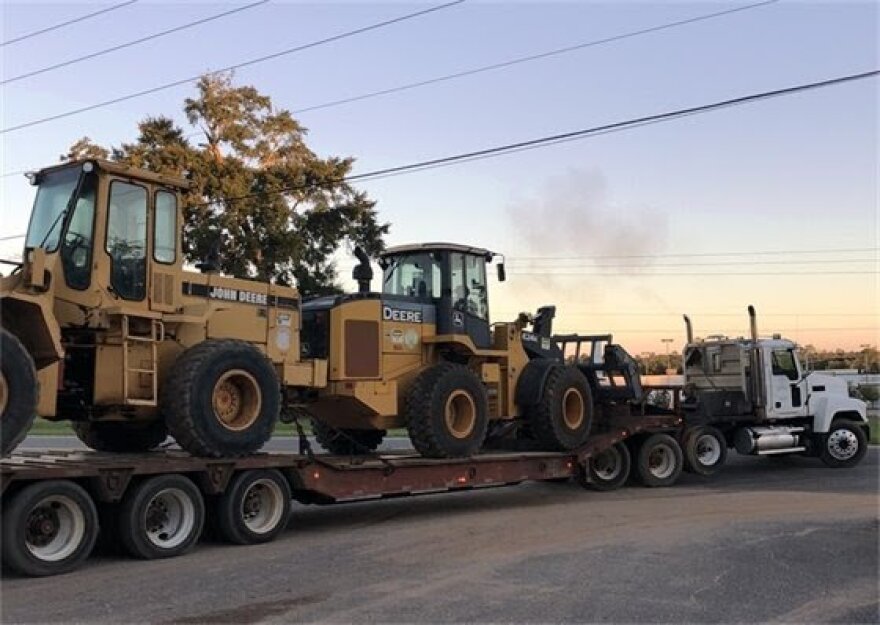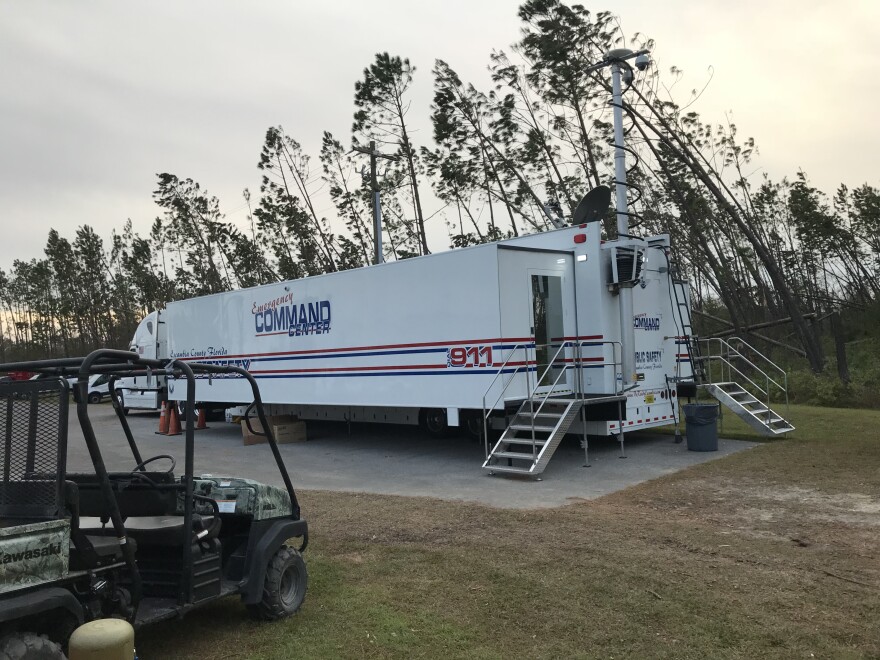The 2018 Atlantic Hurricane is now over.
The six-month period ended Friday, Nov. 30. In northwest Florida, the season is being remembered most for Hurricane Michael, a powerful, late-developing storm that devastated some neighboring communities.
“We were very fortunate,” said Santa Rosa County Public Safety Director Brad Baker.
“Be prepared for anything,” is how Ken Wolfe, chief of emergency management for Okaloosa County, summed up the hurricane season.
The headline from Escambia County Emergency Management Director John Dosh, “It will happen again; don’t know where, but it will happen again.”
According to Dosh, the 2018 hurricane season did not produce enough named storms to go through the entire Alphabet. Nonetheless, he says it was a busy season for the region. Three storms threatened the area and eventually made landfall not that far away.
“One of them was Michael, of course, the most recent one,” said Dosh. Emergency management officials in Escambia also prepared for impacts from Tropical Storm Alberto in late May and Tropical Storm Gordon in September. Both storms made landfall within 100 miles of Pensacola.
“We had three activations here in our operations center where we were monitoring closely these different events and making sure that should this decide to come our way, we were prepared to address whatever it was.”
For the 2018 season, there were 15 named storms, including eight hurricanes, and two of those (Florence & Michael) became major hurricanes.

On October 10, Hurricane Michael slammed into the eastern portion of the Florida Panhandle with sustained winds of 155 miles per hour, just (2 mph) shy of Category 5 strength. It was the third most powerful storm ever to hit the U.S. mainland. The latest death toll from Michael is 43, with over $3 Billion in insured losses. The storm left parts of the region in ruins.
Dosh referred to Mexico Beach as ground zero for Michael, “That’s where they received the right-front quadrant of the storm as it made landfall. The eye went right over Tyndall Air Force Base, and the heaviest impact of the storm and the storm surge went in right around the Mexico Beach area.”
There was damage in Okaloosa and Walton counties, but it was minimal and Northwest Florida generally avoided the brunt of the storm.
As a result, local incident management teams were in a position to help the most devastated areas. In the immediate aftermath, a self-sufficient contingent from Escambia County traveled over to assist with response and recovery in the Panama City area.
“Some of the EMS and fire assets actually went into Lynn Haven and stayed at the Lynn Haven fire stations and supported them for a couple of weeks,” Dosh recalled. “We worked out of the emergency operations center. Law enforcement did daytime and nighttime patrols. They actually helped some of the people that were local folks that hadn’t seen or had a hot meal, so they provided that.”

Santa Rosa County provided similar support in Washington County. Public Safety boss Brad Baker says their deployment to the disaster zone and previous EOC activations was good experience for some of his newer staff members.
“People attrition out and we get new people in, so this provided them an opportunity to you know work when there was a real threat, and not just an exercise like they do every year,” said Baker.
As emergency management officials review the 2018 season, and Hurricane Michael in particular, one of the biggest issues was the failure of communication systems.
For a time, storm-ravaged communities were largely without phone and internet service. “You know, when you can’t talk and you can’t communicate out not only to the citizens but to the state asking for resources it makes it a challenge,” Baker said.
As a result, the team from Santa Rosa referred back to a low-tech communication method found to be effective during Hurricane Ivan in 2004.
“We just did flyers and started updating people and sent them out with our responders and to the pods and all; and, so we validated that that works.”
As a backup, counties throughout the state have access to ham radio communication. Additionally, satellite communications were available. Via their mobile command post, Okaloosa County shared its satellite communications, including 25 satellite phones, with Calhoun County.

“I gave them a crash course in how to run the communications package that’s in the trailer, how to bring up the satellite dish, and set it and how to work the phones,” said Okaloosa’s Ken Wolfe.
Local emergency management officials already are talking about and planning for communication enhancements post-storm. Pre-landfall, each county expanded their communication with the public by utilizing Facebook Live posts to disseminate storm information.
Additionally, Wolfe says his team identified areas of improvement to their local shelter plan.
Planning for communication enhancements is already underway.
Closer to home, Wolfe says Okaloosa identified areas of improvement to their local shelter plan for evacuating residents.
“The shelters worked and all, but we just need better staffing,” he said. “We’ve already got that taken care of and county employees for Okaloosa County are gonna[sic] be the shelter managers, and working with the red cross and the other volunteer organizations inside the shelter.”
When it comes to hurricane or disaster readiness, Michael may have helped with officials’ fears of complacency among residents in the years since Hurricanes Ivan and Dennis in 2004 and 2005.
When it comes to hurricane or disaster readiness for local residents, there have been concerns about complacency setting in given the lack of tropical storm activity in the area since Hurricanes Ivan and Dennis in 2004 and 2005.
However, Wolfe says Hurricane Michael should be a potent reminder of the importance of being prepared.
“Yeah, a two-degree change on that storm, when it was coming in, would have put it right over Okaloosa County.”
“You know we didn’t feel like people were taking the message serious,” added Baker in reference to Santa Rosa County residents. “Now that we’ve had one (major storm), while it didn’t impact our county, it had devastation just to the east of us. So, maybe that’s a good refresher for them. You know, you got to take things serious. You got to prepare.”
Individuals can do their part by making a disaster plan and keeping non-perishable food and emergency supplies on hand.
As for the readiness of emergency management, Escambia’s John Dosh points out that their efforts are never-ending.
“You know people constantly ask us, ‘Well, what do you do when it’s not hurricane season?’ We’re planning. We’re working with our partner agencies to make sure what they’re doing is not in conflict with what we’re doing and all of our plans mesh,” Dosh explained. “It’s a year-round process of planning, training, exercising and making sure everything fits.”
Now that hurricane season is over, Dosh, Baker, and Wolfe and their teams in Escambia, Santa Rosa and Okaloosa counties are focused on preparations for the winter storm season and any other disaster that occurs.





